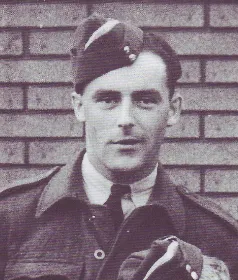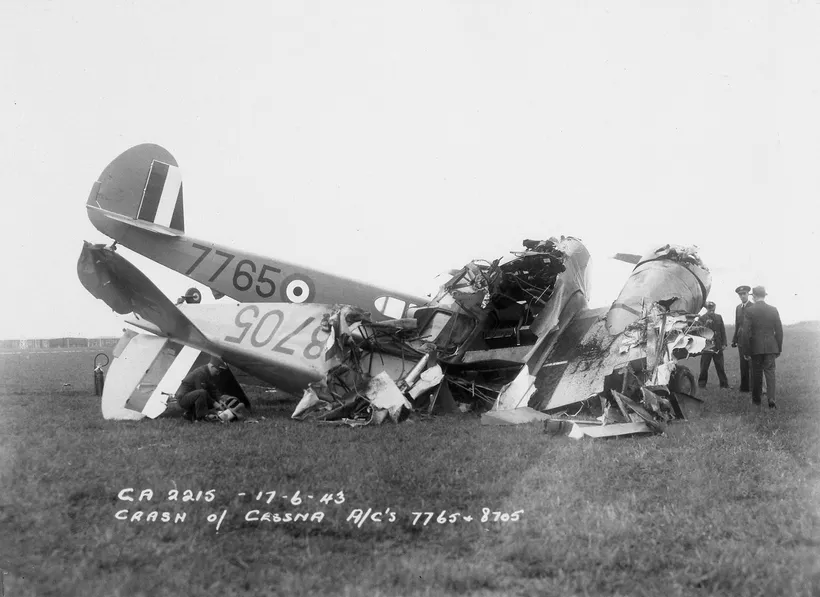Cessna Crane

Canadian Warplane Heritage Museum
The Cessna T-50 Crane was the RCAF version of the Cessna AT-17 Bobcat, a twin-engined advanced trainer designed and made in the USA during the Second World War. It served to bridge the gap between single-engined trainers and twin-engined combat aircraft.
First flown in 1939, the American-built Cessna Crane was developed as a five-seat, light transport civilian aircraft. It was originally intended to serve only a minor role within the BCATP (an initial 180 were ordered in 1940) until the Canadian-built Avro Ansons became available in greater numbers. This was the first large order that Cessna had received for one of its products. Eventually, more than 5,400 Cranes would be produced, of which 826 saw service with the RCAF. Cessna Cranes were used primarily to teach future bomber pilots, after they had received their initial training, to fly multi-engined aircraft at Service Flying Training Schools in western Canada.
Powered by 245-horsepower Jacobs R-755-9 radial engines, Cessna Cranes featured wooden wings and tail married to a fuselage constructed of welded steel tubing. Most of the aircraft was fabric-covered. It was cheap, reliable and relatively easy to fly, with a top speed of 315 kilometres (195 miles) per hour.
The Crane provided twin-engined complexity with economy of operation and went on to become one of the most important aircraft used by the BCATP. Cranes continued to serve with the RCAF until 1947, after which many were purchased by private individuals and companies.
Nicknamed the Bamboo Bomber because of its largely wood construction, the Crane had a reputation as a stable and reliable aircraft. Although not an ideal training aircraft because of its poor single-engined performance and load-carrying capability, it performed its duties satisfactorily and helped train several thousand bomber pilots. Bomber Command Museum of Canada
CASPIR Aircraft Groups:
RCAF On Strength (826), RCAF 400 Squadron (3), Canadian Aircraft Losses (81)Crane Mk. I 7833
First Assigned to No. 4 Service Flying Training School at Saskatoon, Saskatchewan. Category B crash at Saskatoon aerodrome at 12:33 on 30 November 1941. Collided with Crane 7633 while both were landing, at an altitude of 25 feet. To Prairie Airways for repairs on 9 December 1941, with 410:20 logged time. To storage with No. 4 Training Command on 4 June 1942, issued from storage on 23 July 1942. With No. 3 Service Flying Training School at Calgary when it was destroyed in a Category A crash.
1941-07-19 Taken on Strength No. 2 Training Command 2019-08-20
1941-November-30 Accident: 4 Service Flying Training School Loc: Aerodrome Names: Ferris | Murry
1943-January-11 Accident: 3 Service Flying Training School Loc: Aerodrome Names: Campbell
1943-October-30 Accident: 3 Service Flying Training School Loc: Shephard Names: Dansey
1943-12-13 Struck off Strength Struck off, reduced to spares and produce 2019-08-20





 Canadian Virtual War Memorial
Canadian Virtual War Memorial Commonwealth War Graves Commission
Commonwealth War Graves Commission Find-A-Grave.com
Find-A-Grave.com Library and Archives Canada Service Files (may not exist)
Library and Archives Canada Service Files (may not exist) Caulfeild, British Columbia
Caulfeild, British Columbia Cessna Crane Trainer
Cessna Crane Trainer Wikipedia Crane Trainer
Wikipedia Crane Trainer Harold A Skaarup Web Page
Harold A Skaarup Web Page
 RCAF.info - RCAF Station Lincoln Park, Currie, Calgary Alberta
RCAF.info - RCAF Station Lincoln Park, Currie, Calgary Alberta Bomber Command Museum of Canada
Bomber Command Museum of Canada